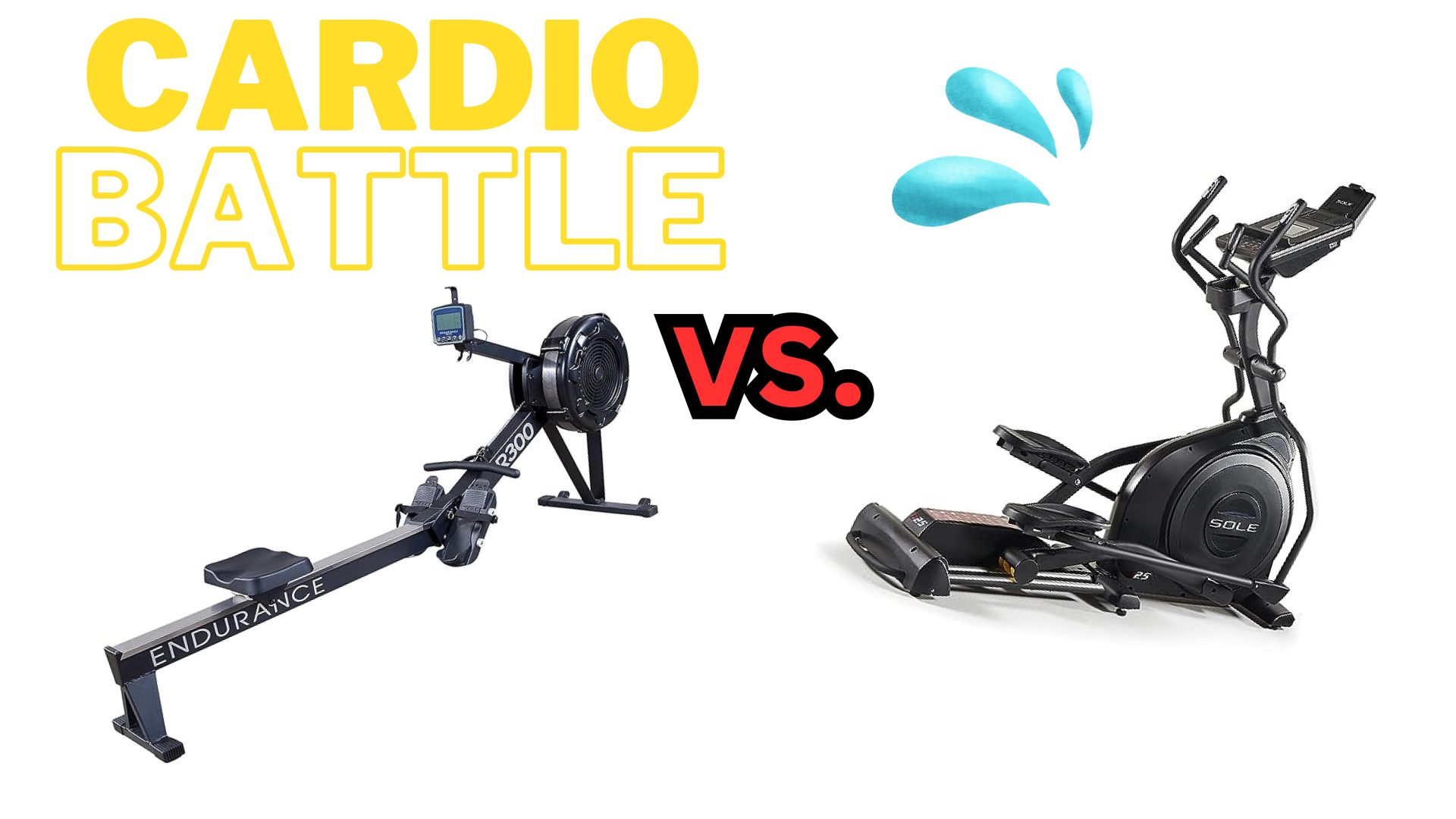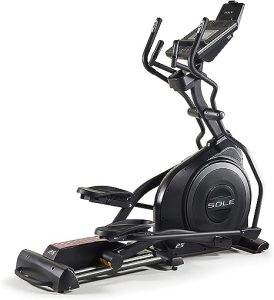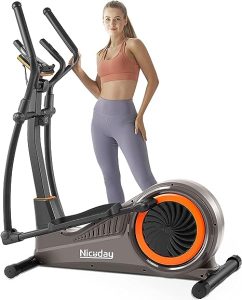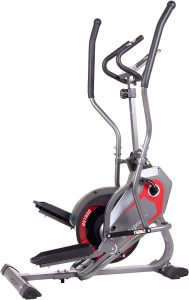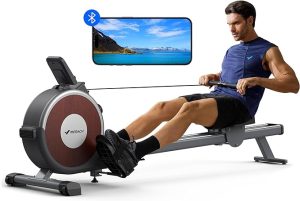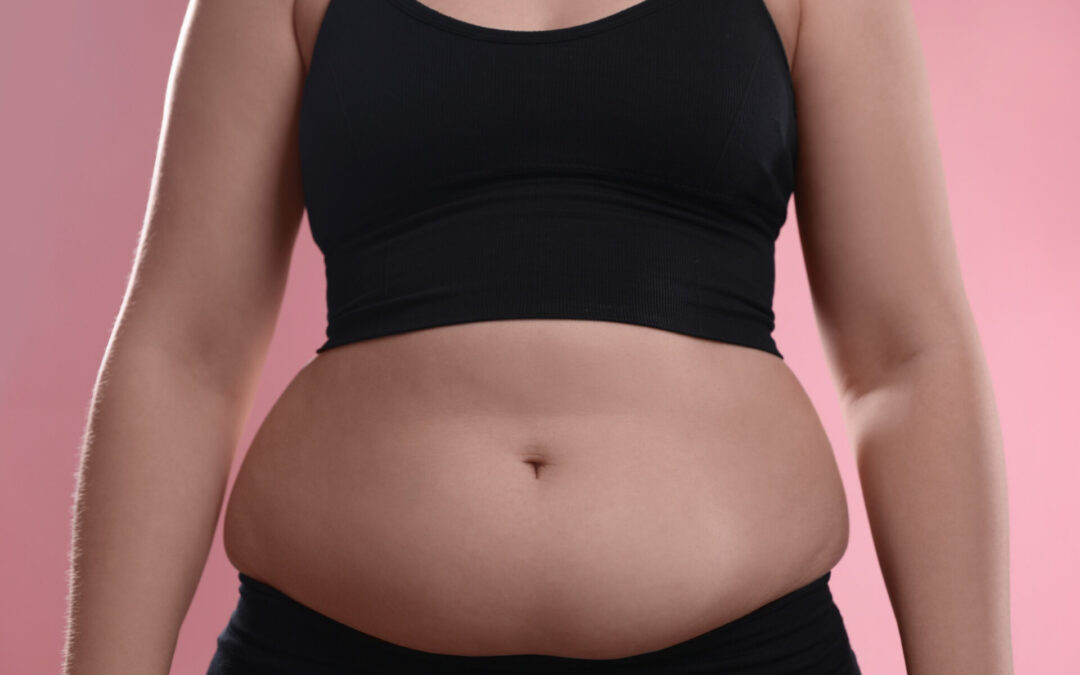When choosing a cardiovascular workout machine, many people struggle with deciding between an elliptical vs rowing machine; both machines offer low-impact workouts that can help improve cardiovascular health and build muscle strength.
There are distinct differences, however, between the two that may make one more suitable for your fitness goals and needs than the other. In this article, we will compare the pros and cons of using an elliptical vs rowing machine.
Elliptical Machine vs Rowing Machine – Which One Burns More Calories?
One of the main factors people consider when choosing a workout machine is its ability to burn calories. Elliptical and rowing machines both offer great cardiovascular workouts that can help you shed unwanted pounds. However, studies have shown that rowing machines may have a slight edge for calorie burning.
A study from Harvard Health Publishing found that using a rowing machine for 30 minutes could burn approximately 210-440 calories for an individual weighing 125-185 pounds. On the other hand, using an elliptical for the same amount of time would result in burning around 270-378 calories for individuals of the same weight range.
It’s important to note that both machines’ calorie-burning potential depends on various factors such as your weight, intensity level, and workout duration. Nonetheless, using either will provide you with an effective calorie-burning session.
Elliptical Trainer vs Rowing Machine – What Are the Main Differences?
We’ve discussed calorie burn and ease of use, but let’s dig deeper into how these two machines differ.
- Workout Type: Ellipticals provide a mostly lower body workout, targeting muscles such as calves and quads. On the other hand, rowing machines offer a full-body workout, working muscles in your arms, legs, back, and core.
- Cardio Benefits: As both machines offer cardiovascular workouts that elevate heart rate and improve lung function, they can both contribute to better overall cardiovascular health. However, rowing may have an edge again due to its ability to work multiple muscle groups simultaneously.
- Impact on Joints: Both elliptical and rowing machines are low-impact options that put little stress on joints. However, specifics matter; while ellipticals provide smoother movements with minimal impact on knees and ankles, proper form is crucial when using a rowing machine to avoid injuries.
- Space Requirements: Ellipticals tend to take up more space due to their elongated shape, while rowing machines are generally more compact and can be easily folded for storage.
- Cost: Generally, ellipticals tend to be more affordable than rowing machines. However, this can vary depending on the brand, features, and quality of each machine.
Top 3 Elliptical Machines for Home Use
Whether you’re a beginner looking to kickstart your fitness journey or a seasoned pro wanting to amp up your home workouts, these elliptical machines are sure to provide an effective and convenient way to achieve your fitness goals. Let’s explore the top contenders that offer a blend of durability, functionality, and user-friendly features to elevate your home exercise experience.
1. SOLE Fitness E25
2. Niceday
3. Body Power 2 in 1 Elliptical Stepper Machine
Top 3 Rowing Machines for Home Use
Rowing machines offer a full-body workout, combining cardiovascular endurance with strength building, all within the comfort of your own home. Whether you’re aiming to improve your overall fitness, lose weight, or enhance your endurance, these top rowing machines are designed to meet your needs. Join us as we explore the leading contenders in the world of home rowing, each promising durability, performance, and versatility to elevate your home workout routine.
1. YOSUDA Magnetic Water Rowing Machine
2. Body-Solid Endurance R300 Air Resistance Rowing Machine
3. MERACH Magnetic Power Rower Machine
Which One is Easier and More Fun to Use?
When it comes to ease of use and enjoyment, elliptical and rowing machines have different qualities. Ellipticals are known for being user-friendly as they provide low-impact workouts that mimic running without putting strain on your joints.
They also come with adjustable resistance levels and incline options, making them suitable for people of all fitness levels.
On the other hand, rowing machines can be a bit more challenging to get used to as they require proper technique and coordination. However, once you get the hang of it, many people find rowing a fun and engaging full-body workout. Ultimately, it comes down to your personal preference, but in our opinion, you really can’t go wrong.
What Muscles Does Each Machine Focus the Movement On?
Let’s break down the individual muscles that each machine targets and works.
Elliptical:
- Quadriceps (front thigh muscles)
- Calves
- Glutes
- Hamstrings (back thigh muscles)
Rowing Machine:
- Biceps and triceps (upper arm muscles)
- Deltoids (shoulder muscles)
- Latissimus dorsi (back muscles)
- Pectorals (chest muscles)
Are There Certain Injuries That Could Determine Which One Is Better To Use?
Both machines offer low-impact workouts, making them suitable for people with joint or lower body injuries. However, individuals with upper body injuries may want to opt for the elliptical as it focuses more on the lower body.
Also, consider that rowing machines require proper form to avoid injuries, and if you have any pre-existing back issues, it’s best to consult a doctor before using one. For injury-prone or people recovering from injuries, ellipticals may be a safer option.
Rower vs. Elliptical – Which Is More Expensive?
While both offer great workouts, they differ in price. Though exceptions exist, rowing machines are usually more expensive for a few reasons.
Firstly, their build is sturdier to handle the pulling motion and higher weight capacity, often involving expensive materials like steel and complex resistance mechanisms. Elliptical trainers, relying on simpler movements, can be built with readily available materials, potentially lowering costs.
The design also plays a role. Rowers’ complex mechanics with moving parts like rails and sliders require more engineering and manufacturing resources than ellipticals’ simpler, fixed-frame design.
Finally, market demand might influence price. Rowing machines may experience higher demand due to their wider muscle engagement and potential for intense workouts, potentially leading to slightly higher price points. The elliptical market, being larger, might see increased competition and lower prices due to economies of scale.
Is the Rowing Machine or Elliptical Easier to Store and Move?
Generally, rowing machines are easier to store and move due to their compact size. Most models can also be folded for storage in small spaces. On the other hand, ellipticals tend to take up more space and may require disassembly to store or transport.
Many rowing machines come with wheels for easy transport, while most ellipticals may require two people to move them due to their weight. Therefore, a rowing machine may be the more convenient option if you have limited space or need a workout machine that can be easily moved around.
Are the Rowing and Elliptical Machines in the Gym Much Different Than Home Machines?
In most cases, the rowing and elliptical machines used in a gym are similar to those for home use. However, commercial-grade equipment may offer more features or higher-quality construction than home-use machines.
The main difference between gym and home machines is maintenance. Gym equipment is used by multiple individuals each day, which can lead to wear and tear. Therefore, these machines require constant maintenance and repairs from professionals to ensure they are functioning properly.
Home-use machines do not undergo as much stress but should still be maintained regularly to keep them working efficiently.
Treadmill vs Elliptical vs Rower – Which Is Best?
The answer to this question depends on various factors, such as your fitness goals, preferences, and physical condition.
- Treadmills offer a more intense lower-body workout compared to ellipticals or rowers. They can help build muscle strength and improve endurance.
- Ellipticals are ideal for low-impact workouts and burning a high number of calories without putting strain on joints.
- Rowing machines provide an effective full-body workout that can improve muscular strength and cardiovascular health.
Ultimately, the best machine for you is the one that you will use consistently and enjoy using. We recommend trying out different options at a gym or testing them in-store to find the perfect fit before deciding.
Bottom Line
Choosing between an elliptical and a rowing machine depends on individual preferences and fitness goals. While both machines offer low-impact workouts that can help burn calories and improve cardiovascular health, they differ in workout type, targeted muscles, ease of use, and cost.
It may make sense to incorporate both machines into your workout routine for variety and to target different muscle groups. It’s important to consult a doctor before starting any new exercise routine, especially if you have pre-existing injuries or conditions.
Consider trying out various options at the gym or testing them in-store before deciding which machine is best suited for your needs. Whichever option you choose, consistency with your workouts is key to seeing results and improving overall fitness.
Zoppler is reader supported and may earn affiliate commissions from links on this page. We support and believe in all the products and services we promote and are affiliated with.

